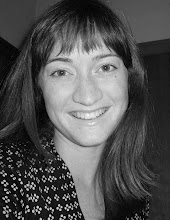I've been home for over a month now. And not much to show for it except a few mildly frostbitten toes, well on their way to a full recovery.
This month has also given me a chance to catch up with old friends. Which is of course a euphemism for saying I've had a chance to hear more gossip than is entirely healthy. I'm still in shock over the staggering number of former school chums, classmates, coworkers, and ex-boyfriends who are getting married. While most of our number are happily moving on to coupledom, I have several times found myself among people who would much rather re-contract middle school cooties than, oh say, propose.
The enchanting little game, Battle of the Sexes, is the perfect outlet for such people. I've played twice since I've been home. Teams are divided into boys and girls. The girls team has to answer questions about typically male subjects: sports, cars, war heros, etc. The boys teams has to answer questions about fashion, cooking, shopping, etc. Both times i've played the girls team has completely demolished the boys team. The owners of the board games have said this is usually the case. (I'm wondering how they keep convincing these poor guys to keep playing?) While these numbers are not statistically significant, I got to wondering about the obvious female bias in the game. I've developed three theories that are not entirely exclusive:
Theory #1: The game actually is biased towards women. The makers of the game, a man and woman I believe, did their research and found that women are the predominate purchasers of board games. They slanted the questions to favor female teams, put it in a pink box, and presto!
Theory #2: There is a regional bias. North Dakotans are much more apt to be savvy about autmotive repair and construction technology, than about what's happening on runways in Paris. Truthfully, I found many of the questions for the guys about shopping and french desserts to be much harder than the boys questions about football.
Theory #3: I'm not sure when the game was developed, but it definately plays to what a male and female were more than likely expected to know in the 1950's, not the 21st century. Since the 1950's my theory is that women have invested much more time into invading typically male dominated spaces than the reverse. It has also become more culturally acceptable to see women in male dominated fields, than the reverse (Though I think "metrosexualness" will change this.)
Of course it's complicated, and most likely some combination of all of the above, but I am very intrigued by the last theory. This seems to jive with some of the numbers I've been getting in my preliminary research into women in vocation education courses. Last year at Dickinson High School there were 44 "non-traditional" students in voc-ed classes. Non-traditional is defined as a woman learning about a historically male field, and a man learning about a historically female field. There were 35 females enrolled in automotive, welding, and construction classes, and only 9 males enrolled in cooking and home economics classes. I'll be interested to see if these ratios are reproducible nationwide.
In the meantime I'm glad that there is a trivia game where a complete lack of culture is highly advantageous.

